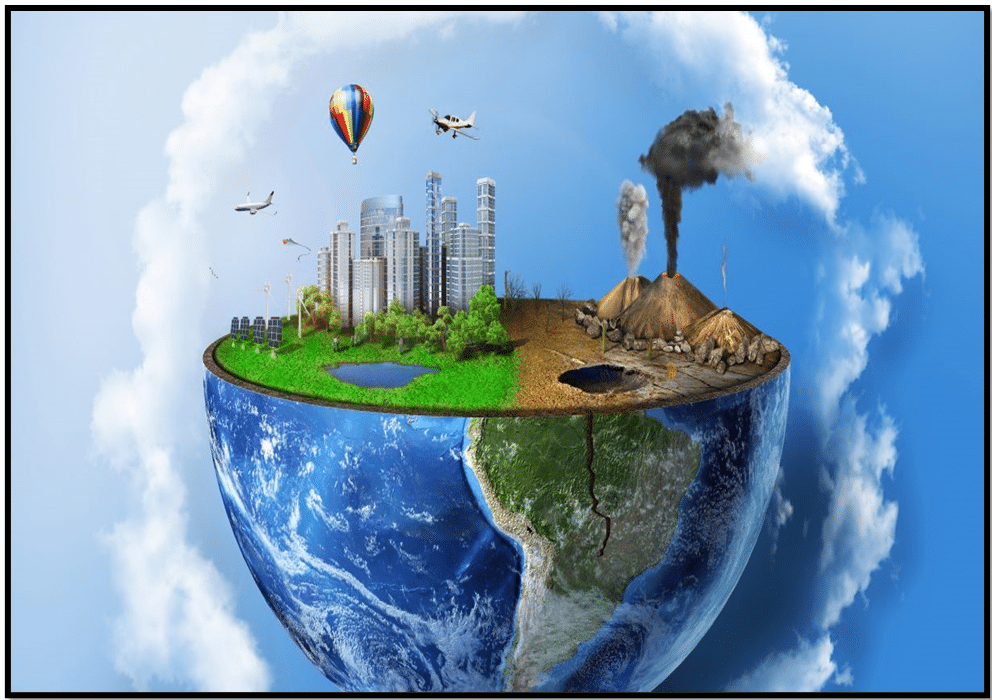HEALTH ON A HOT PLANET
SYLLABUS:
- GS 3: Conservation, environmental pollution and degradation, environmental impact assessment.
Focus:
- There is scientific consensus that 2023 was the hottest year ever in the planet’s recorded history.
Source: Oxford
As global temperatures continue to rise, the health impacts of this heat become increasingly severe, affecting not only the spread of infectious diseases but also non-communicable diseases and food systems. This amplification of health risks calls for a comprehensive understanding and proactive measures to mitigate these effects.
Effects of Heat on Infectious Diseases
- Vector-Borne Diseases Expansion: As temperatures rise, vector populations such as mosquitoes expand in range and breeding season duration, increasing incidences of diseases like malaria and dengue fever. Studies have shown that for each 1°C increase in temperature, the reproductive number of mosquito-borne diseases can increase significantly.
- Water-Borne Disease Prevalence: Higher temperatures lead to faster bacterial growth rates, increasing the risk of diseases such as cholera and typhoid, especially in areas where water scarcity forces the use of unsafe water sources.
- Reduced Hygienic Conditions: Drought conditions compromise water availability for hygiene, leading to higher transmission rates of communicable diseases. The WHO has highlighted the critical role of water in disease prevention, particularly in densely populated areas.
- Ecosystem and Pathogen Dynamics: Altered climatic conditions can introduce new pathogens into human populations as wildlife migrates to new areas, bringing zoonotic diseases closer to human habitats.
- Strained Health Services: As the frequency of infectious disease outbreaks increases, health systems face higher demands, often leading to overwhelmed services and reduced care quality, particularly in developing countries.
Direct Health Impacts of Heat
- Heat-related Illnesses: Heat exhaustion and heat stroke are direct outcomes of prolonged exposure to high temperatures, with symptoms ranging from heavy sweating and dizziness to severe dehydration and loss of consciousness.
- Increased Cardiovascular Load: Heat stress leads to cardiovascular strain by increasing heart rate and blood thickness, which can precipitate thrombosis and other serious conditions. Epidemiological data indicate a clear rise in hospital admissions for cardiovascular issues during heatwaves.
- Exacerbation of Respiratory Conditions: Hot weather, particularly when combined with urban smog, significantly worsens respiratory ailments. Studies have linked increased ER visits for asthma and other respiratory diseases to periods of high heat and pollution.
- Elevated Mortality Rates: Research indicates that mortality rates can increase by up to 12% during heatwaves, with the elderly and chronically ill being most at risk.
- Vulnerable Groups: Certain populations, including infants, the elderly, and individuals with pre-existing health conditions, are particularly susceptible to heat due to less effective thermoregulation and adaptive capabilities.
Impact on Non-Communicable Diseases
- Heat and Cardiovascular Diseases: Heat can trigger heart attacks and strokes by inducing blood vessel dilation and increasing blood viscosity. Studies show that each 1°C increase in temperature correlates with a significant uptick in cardiovascular incidents.
- Complications in Diabetes: Heat affects blood sugar levels and can disrupt the management of diabetes, leading to higher rates of complications. The dehydration associated with heat also impacts kidney function, exacerbating diabetic kidney diseases.
- Kidney Health: Reduced blood flow and dehydration in hot weather can lead to acute kidney injury, which is increasingly reported during heatwaves.
- Cancer and Environmental Toxins: Exposure to increased levels of environmental pollutants like ozone and particulate matter during wildfires, which are more common in hot conditions, has been linked to higher rates of lung and other cancers.
- Mental Health Effects: The psychological impacts of heat include increased rates of anxiety, depression, and other mental health disorders, exacerbated by the physical discomfort and potential displacement caused by extreme weather.
Effects on Food and Nutrition
- Decreased Crop Yields: Studies estimate that global warming will reduce the yield of staple crops by approximately 10% for each degree Celsius increase, impacting global food security.
- Nutritional Deficiencies: Higher CO2 levels can lower the nutritional quality of crops, including reductions in protein, zinc, and iron content. This has significant implications for nutritional health, particularly in developing countries.
- Impacts on Fisheries: Rising sea temperatures disrupt marine ecosystems, leading to decreased fish populations and affecting millions who rely on fish for dietary protein.
- Biodiversity Loss: Climate-induced habitat changes lead to biodiversity loss, reducing access to a variety of wild foods which are crucial for a balanced diet.
- Adaptation in Agriculture: The necessity to adapt agricultural practices to increasing temperatures involves shifts in crop types and farming techniques, which can disrupt existing food systems.
Adaptation and Mitigation Strategies
- Developing Heat Action Plans: Local governments are encouraged to implement comprehensive heat action plans that include warning systems, public cooling centers, and community outreach to reduce heat-related risks.
- Building Climate-Resilient Health Infrastructure: Strengthening health infrastructure to cope with increased patient loads during heatwaves, including enhanced emergency services and heat-resistant facility designs.
- Public Education and Awareness: Educating the public and health workers about the risks of heat and appropriate preventative measures can significantly reduce heat-related illnesses.
- Innovative Urban Planning: Implementing urban solutions such as heat-reflective building materials, increased green spaces, and improved ventilation can help mitigate the urban heat island effect.
- Personal Protective Measures: Advocating for simple personal measures such as wearing light-colored, loose clothing, using sun protection, and maintaining hydration can greatly reduce the direct impacts of heat.
Conclusion
The escalating heat due to climate change demands urgent adaptive and mitigative strategies to protect health on multiple fronts. By implementing heat action plans, improving healthcare resilience, and promoting community awareness, we can safeguard public health against the worsening impacts of a hotter planet.
Source:Indian Express
Mains Practice Question:
“Climate change is manifesting primarily through increased temperatures, impacting public health, agriculture, and ecosystems in profound ways. Discuss the multifaceted impacts of rising temperatures due to climate change, including on infectious diseases, non-communicable diseases, food security, and societal adaptation strategies. Examine how these challenges can be addressed through integrated policies and innovation in public health and agricultural practices.”
Associated Articles:
https://universalinstitutions.com/on-indias-heat-action-plans/
https://universalinstitutions.com/on-indias-heat-action-plans/




